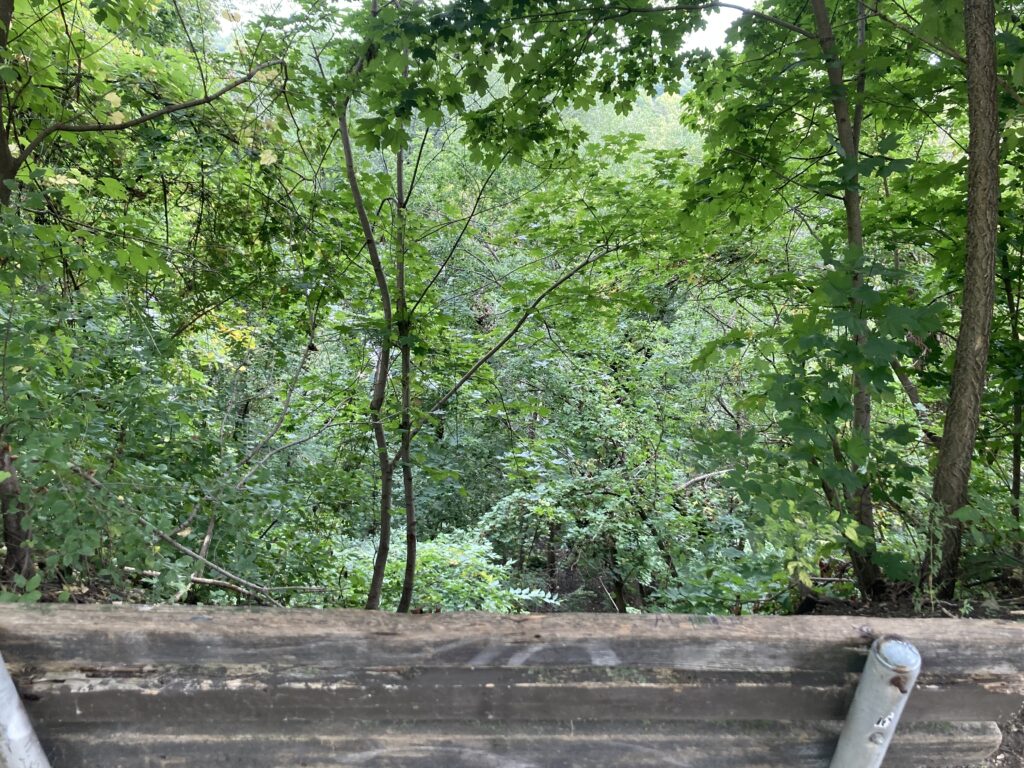3.25 miles
2 trails + ravine
72 degrees
dew point: 62
8:30 in the morning and 72? Ugh. I’m glad it’s cooling down on Monday. My IT band felt strange for the first few minutes, but after that I forgot about it.
10 Things
- noticed the difference in drips at the 2 ledges — one concrete, one limestone — in the ravine between the 35th and 36th street parking lots — the concrete ledge, which was higher up, dripped less and slower
- a greeting from Mr. Morning!
- a peloton — 2 dozen bikers? — on the bike path
- not much yellow, but lots of red and orange
- the Winchell Trail was muddy parts — when did it rain?
- almost running into a walker, thinking that I was coming up behind them instead of them coming towards me — sometimes I can’t tell when someone is facing me or turned away
- the trail through the oak savanna: only a swirl of leaves and mulch
- a little more of a view at the edge of the world and the folwell bench
- a thick haze, trapped in the oaks in the savanna
- the surface of the river burning white
I decided to take a video of the river instead of a photo; I wanted to capture the movement of the light on the surface.
for future Sara: Ran past a house all gussied up for Halloween on 34th near Seven Oaks. A figure in black leaning over the fence, graves and skeletons in the front yard. I need to walk by here at night.
Listened to water trickling and voices below for the 2.5 miles of the run. Put in Taylor Swift’s new album for the last bit.
excerpt from Karma Affirmation Cistern Don’t Be Afraid Keep Going Toward the Horror / Gabrielle Calvocoressi
it’s okay. To know you’re part craven smuggler.
Part thief. Maybe if you know your animal.
I mean really know your animal.
You won’t become a builder of factories
or slave ships. Maybe instead of building
a ship somewhere in your body
you just let yourself feel the pain and
humiliation. No need to make it beautiful
for some future reader. Just say how much
you wanted to hurt someone like you got hurt.
And then just watch that for a while. It’s okay
to feel horribly ashamed. Best not to look away.
The gate to joy is past the factory and past
the reader and maybe it’s past your last breath
on this planet. There’s nothing you can do about it.
You come from the cistern of brutality
and hunger. You are the resonator. Just breathe.
Best not to look away. Wow! On the Poetry Foundation site, the poet reads this poem and they do a great job.
